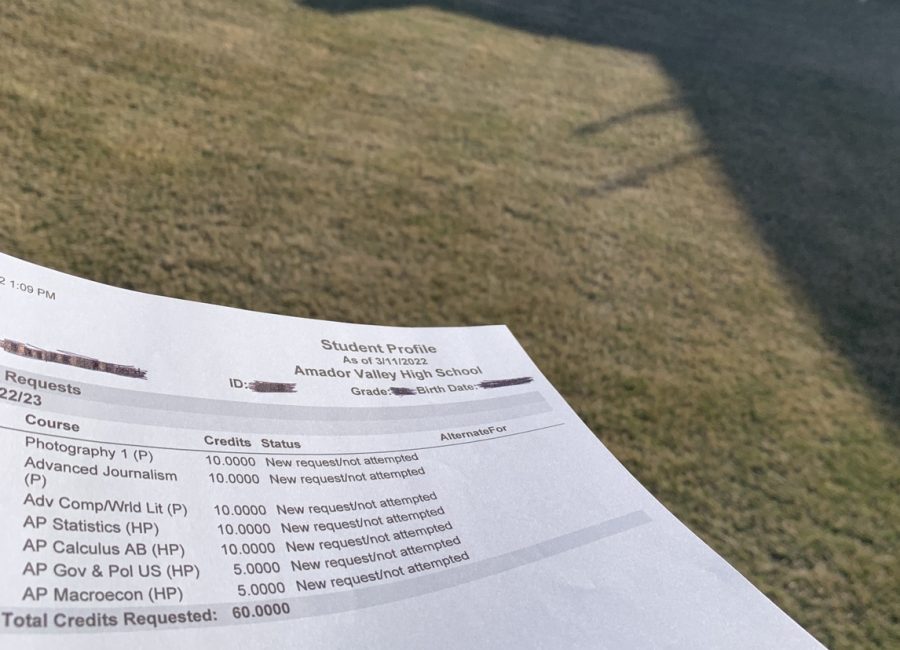How are students’ class schedules made?
Students have begun to select their schedules for Fall 2023, as counselors work to satisfy almost all students with the classes of their choice.
March 14, 2022
Within the past month, students at Amador Valley have chosen their schedules for next year if they are returning. The process is quite simple – students head over to Q Connection and find the six classes they want to take for the approaching year. It may seem easy on our ends to submit our requests, but there’s a ton of work being done behind the scenes by our scheduling counselors and administrators.
“After all students have put in their course requests for next year and the deadline for students to make changes passes (this year it’s March 15), counselors and administration look at the information and double check that all students have requested certain courses that are required for graduation,” said Lauren Bell, a counselor for students’ last names M-P.
Counselors will look at all the requests made by students and tally them up to see which courses Amador can offer next year. There’s a specific threshold to pass in order for our high school to host that class for the preceding year. The process of figuring out how many teachers are needed to teach a certain class can take a ton of time, as Amador offers so many courses.
“Creating the master schedule is a bit of a jigsaw puzzle to make all the pieces (the classes taught by which teacher during which period) fit together within a 6-period school day,” said Audrey Zarrinkhat, a counselor for students’ last names Q-S.
The rest of the process is very complicated, but luckily, we have our reliable platform of Q Connection to help automatically update the scheduling system with the students placed in their appropriate classes. To prevent heavy overflow into a specific class, Q is also able to efficiently address this issue.
“We use Q to set a maximum number of students in each period of each class so that we don’t over-enroll or have overflow of students. Some classes are set smaller than others. For example, a math class might have 32 students set as the maximum” said Bell.
There are times where students may choose to switch our schedule requests and submit a schedule change form to the counseling office. In this event, counselors will check to make sure a class required for graduation requirements or UC/CSU eligibility is not dropped.
“Depending on when the change is requested, we make sure that we make as few changes as possible. We try to keep [students] with the same teachers and try to move as few classes around as possible,” said Zarrinkhat.
Despite making it seem simple, the counselors are always bombarded with scheduling change requests which can mess up the entire process of scheduling for students. It’s important for students to do their best at making the final decision for a class schedule before the deadline hits to ensure smooth transitions and less of a hassle for our counselors.
“I never realized how much goes into the scheduling process and how our counselors work at giving us the best possible opportunity to be placed into the classes we want,” said Amir Salehifar (‘23).




